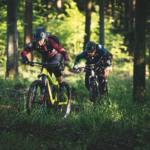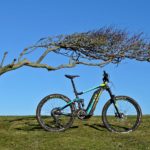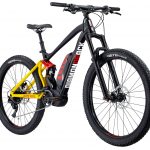That's spot on Woosh..I had about 5% too get back down..Was on fire tracks in Spain...zlatan,
if you weigh 100kgs and your bike 20kgs, you ride up a hill for 9 miles, gaining 3000ft (900m) elevation, here is the required potential energy:
E = mgh = (100+20) * 9.98 * 900 / 3600 WH = 300WH
Adding to this, your bike needs some 12WH * 9 = 108WH for the roads.
Total: 408WH
It will depend on your selected assist level, if you use climb mode, you put in 25%, the bike 75%. The motor on the bike will run at around 80% efficiency, your battery consumption will be:
= 408WH * 0.75/0.8 = 382WH
Your battery is pretty much drained by the time you get to the top.
If you use a lower assist on some of the route then you saved some battery.
So where does that put us with the 750 watts Dve8 speaks of... Looked to me as tho power bars were on full nearly all time..( going up)
Its a ride I could not dream of completing without e help...
Saying bike can consume ( or produce) 750 w is very misleading when its steady state max must be well below that figure. Perhaps I,ll let David Millar ride my bike next time, suspect it would need a rider of his capability to extract anything like 750 w. ( btw he lead ride on unassisted, well I sort of tagged on behind, he,s a friend of a friend who I was riding with)
Last edited:





